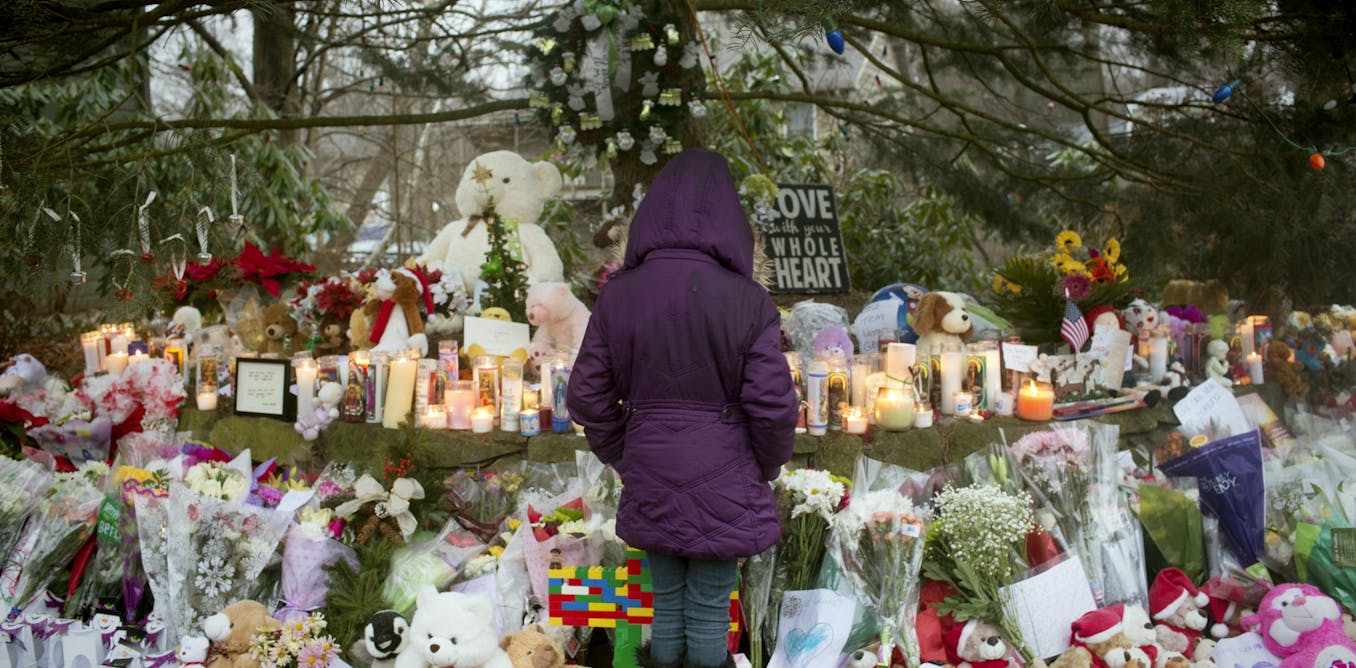Fatal school shootings don’t just devastate communities emotionally – they also harm their economies, new research shows. People eat out less, avoid public spaces and generally spend less money after a tragedy strikes a local school. This has real economic consequences for neighborhoods that are already reeling.
We are a team of marketing professors, and in a recent study we looked at household spending in more than 60 U.S. counties that had experienced fatal school shootings between 2012 and 2019. We found that in the six months following an attack, people spent an average of 2.1% less on groceries.
In a separate analysis of store-level data from 2019 to 2022, we examined 44 more school shootings and found similar declines. Spending at restaurants and bars dropped by 8%, and purchases at food and beverage stores – a category that includes grocery stores – fell by 3%. For the average U.S. county, this represents about US$5.4 million in lost grocery revenue.
Importantly, we found no evidence that consumers spent more on online shopping or food delivery to compensate. The reductions represent real losses in economic activity.
To understand why this happens, we conducted three behavioral experiments. We found that people who read news about fatal school shootings said they were more anxious about being in public and less likely to visit a grocery store or restaurant than those who read about other similarly tragic events involving children, such as fatal car accidents or drownings.
Among several potential psychological explanations, anxiety about public safety best predicted this reduction in spending. That fear, we found, consistently hits harder in politically liberal areas. For example, grocery spending fell 2.4% in liberal-leaning counties compared to 1.3% in conservative-leaning counties in the six months following a fatal school shooting.
Why it matters
School shootings have become tragically common in the United States. Between 2013 and 2024, there were 1,843 such shootings – nearly three every week. Since the Columbine High School shooting in 1999, 203 children and educators have been killed in these tragedies.
We found that school shootings reshape communities far beyond the schoolyard. Many residents withdraw from public spaces. Local businesses can lose customers. The result is a lasting decline in consumer activity.
And our findings could understate the problem. We studied spending categories such as groceries and food, which are typically resistant to short-term change. This suggests that the actual economic toll, especially in sectors such as retail and entertainment, may be even greater.
These effects aren’t caused by damaged infrastructure. They are behavioral, rooted in fear and avoidance.
This points to the need for broader, more coordinated community responses following fatal school shootings. In addition to providing trauma care and improving school safety procedures and infrastructure, local governments may need to consider proactive policies that support economic recovery. Relief grants, public communication campaigns and community engagement initiatives could help restore a sense of normalcy and public confidence.
What still isn’t known
While our study shows that fatal school shootings hurt local economies, it leaves an urgent practical question unanswered: How can policymakers and local businesses help these communities bounce back?
Right now, there’s not much solid evidence about which strategies actually work. For example, could public safety messaging help restore consumer confidence? Would investments in visible security or mental health services reduce anxiety and encourage people to reengage with local businesses? These are important questions for future research.
Researchers can also help businesses by identifying practical ways to rebuild trust and foot traffic. While industry best practices emphasize environmental modifications, staff training and enhanced communication about safety protocols, much of that guidance is drawn from other crisis contexts rather than from systematic research on responses to school shootings.
The potential for retailers to adopt trauma-informed approaches – such as updating store layouts, providing specialized staff training or offering community outreach programs – represents an area where more research could do a lot of practical good. It’s also possible that coordinated responses involving multiple businesses could be more effective than efforts led by individual retailers.
Figuring out what works is essential for protecting local economic stability and helping residents heal. Without stronger evidence, communities may be left to navigate their own recovery process in the dark.



